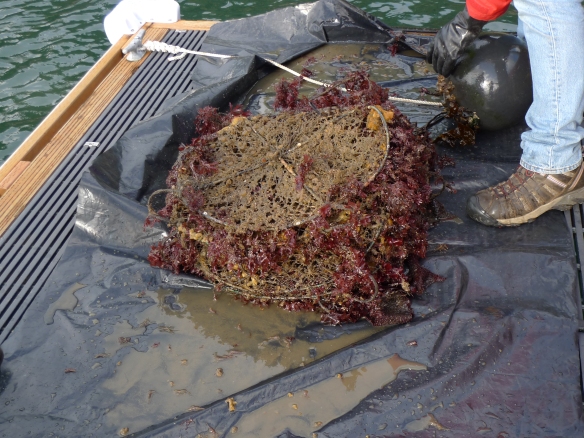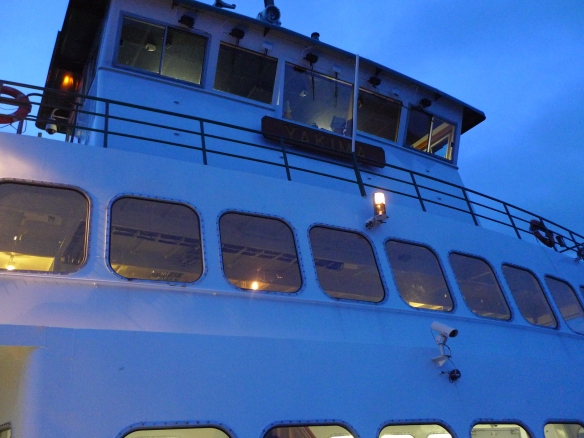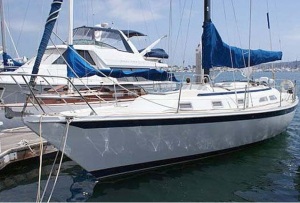Training Complete!
Wrapping up the final thoughts, ideas and plans for the adventure coming up, Joseph and I went though a few more lists before I left the San Jauns. One of the important things we checked out was the operation of the BGAN terminal at sea. We successfully sent 2 messages from the boat- while traveling around 5 knots.
Down at the dock we enjoyed some marine science on the dock, looking at the catch from a marine survey net that they keep at the camp. We examined sea urchin, sea slugs, sea squirts, shrimp, decorator crab and more. The decorator crab is so named because it takes algae and attaches it to its legs and body in order to have the best ‘place-based’ camouflage. Way cool!
In addition to Canoe Island French Camp offering great summer experiences through French language, many opportunities exist to go to the island and explore marine science. Check out more about this great location at http://www.canoeisland.org/ . Canoe Island French Camp is one of the country’s premier French residential camps, located near Seattle, Vancouver BC, and Victoria BC. Children, ages 9-16, take part in a unique mix of French language and culture through artistic and outdoor activities. Fencing, archery, sailing, kayaking, swimming, photography, marine biology, and French culture, cuisine and language classes are options every day.
This week I will have a conference call/ video chat with the teachers in the ICE Net project to talk about sailing trip. I will post their thoughts and questions here later in the week.
Finally, in other updates the online MATRIX of climate concepts is soon to launch and you will be able to find the University of Idaho AL@ homepage up soon!






















